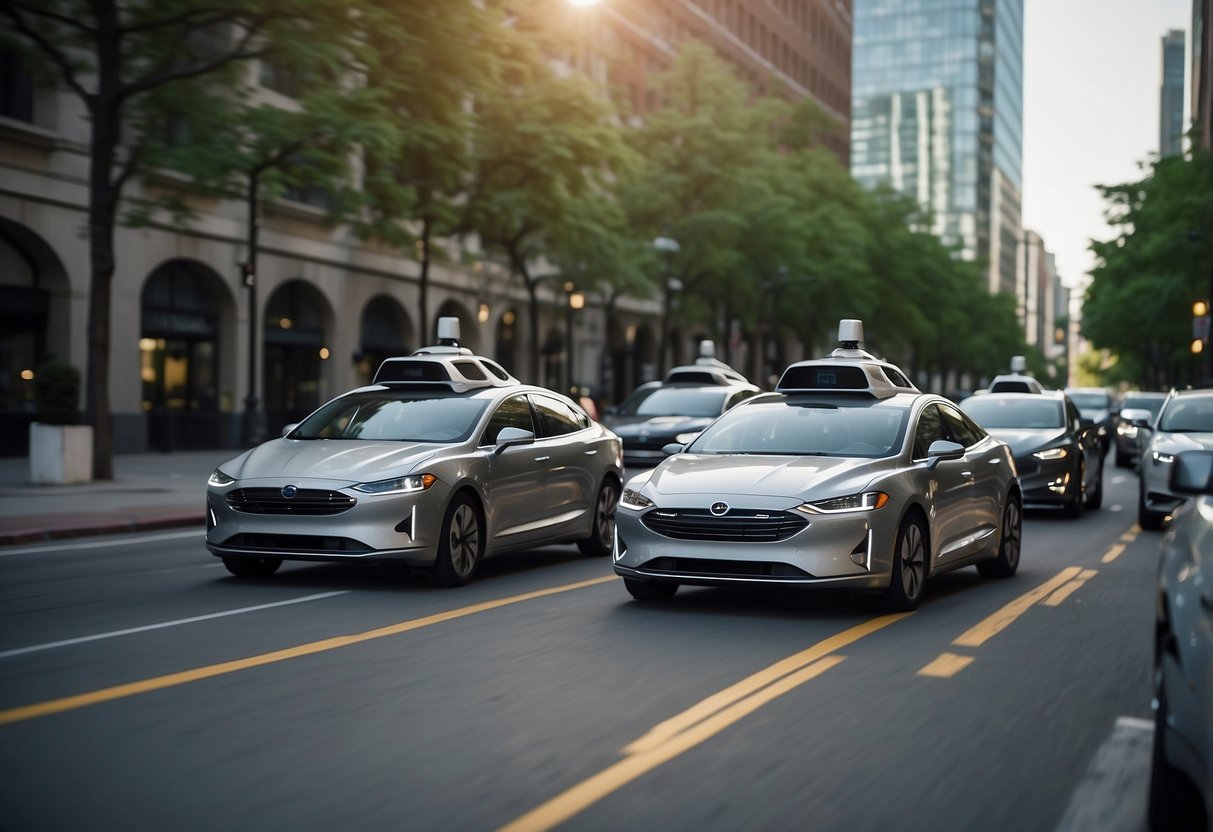
Human-Machine Interaction
Advances in autonomous technology have revolutionized the way drivers interact with vehicles. Significant improvements have been made in user interfaces, ensuring that human-machine interaction is intuitive and seamless.
User Interface and Experience
User interfaces in self-driving cars have become more sophisticated, prioritizing ease of use and safety. Touchscreens, voice commands, and heads-up displays provide drivers with essential information without causing distractions.
Voice-activated systems allow users to interact with their vehicles without needing to take their hands off the wheel, ensuring both convenience and safety. Heads-up displays project vital data onto the windshield, enabling users to keep their eyes on the road.
These interfaces are designed to make the driving experience more intuitive. Real-time updates and easy access to controls ensure that users can navigate and interact with their vehicles effortlessly.
Ethical Considerations and Public Perception
Self-driving cars bring numerous ethical considerations and influence how the public perceives this technology. Privacy concerns and accountability challenges stand out as critical issues.
Privacy Concerns
Self-driving cars generate and process a vast amount of data. This includes location tracking, driving habits, and passenger information. The potential misuse of this data raises significant privacy concerns. Companies collect and store data to improve autonomous driving systems.
There is also the issue of data security. If not properly protected, it could be vulnerable to hacking. The management of this data becomes crucial. The extent to which this data will be shared with third parties or used for surveillance purposes remains a sensitive topic.
Accountability and Moral Dilemmas
Who is responsible when an autonomous vehicle is involved in an accident? This question creates complex legal and ethical discussions. Should it be the manufacturer, the software developer, or the car owner? Determining blame is crucial for insurance and legal purposes.
Moral dilemmas also arise. Autonomous vehicles must make decisions that can impact human lives. For example, in a potential collision, should the car prioritize the safety of its passengers over pedestrians? These scenarios challenge ethical frameworks and require thorough consideration.
Navigating these issues is essential for the acceptance and implementation of self-driving cars in society.
Economic Impact
Self-driving cars bring transformative changes to many economic sectors, leading to shifts in transportation jobs and the potential emergence of new business models. These impacts could either lead to economic growth or require significant adjustments by affected industries.
Impact on the Transportation Industry
The transportation industry is facing a major shift due to autonomous vehicles. Traditional taxi and ride-sharing services could see reductions in operational costs, as self-driving technology eliminates the need for human drivers. This shift could make these services more affordable and widely used.
Freight and delivery services might experience significant cost savings. Autonomous trucks can operate continuously, reducing delivery times and labor costs. Logistics companies could optimize routes more efficiently, enhancing productivity. However, this also raises concerns about job displacement for drivers.
Public transportation authorities may also integrate self-driving buses and shuttles. These adaptations could lead to broader service availability, especially in underserved areas. Despite these benefits, significant investments in infrastructure and technology upgrades are necessary, which could pose a financial challenge.
Potential for New Business Models
Self-driving cars open up opportunities for innovative business models. One potential area is autonomous ride-sharing fleets. Companies could deploy self-driving cars that provide on-demand transportation, effectively reducing the need for personal car ownership and reshaping urban mobility.
Another emerging model involves autonomous delivery services. Retailers and logistics companies could use self-driving vehicles for last-mile deliveries, enhancing efficiency and customer satisfaction. These services could also reduce delivery costs, benefiting both businesses and consumers.
Further, there is potential for subscription-based models where users pay a fee for access to a fleet of self-driving vehicles. This approach could change how transportation is consumed, offering flexibility and convenience. Startups and established companies alike are exploring these new avenues, highlighting the transformative potential of autonomous technology.



